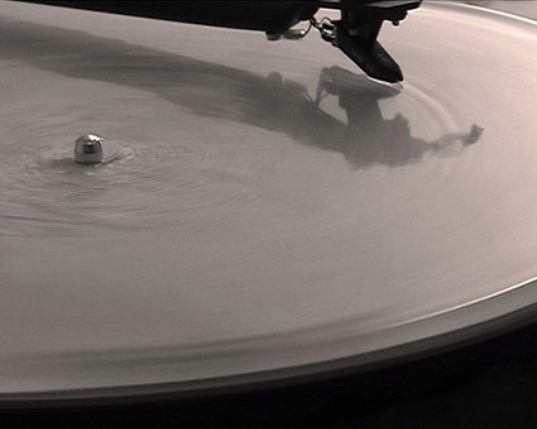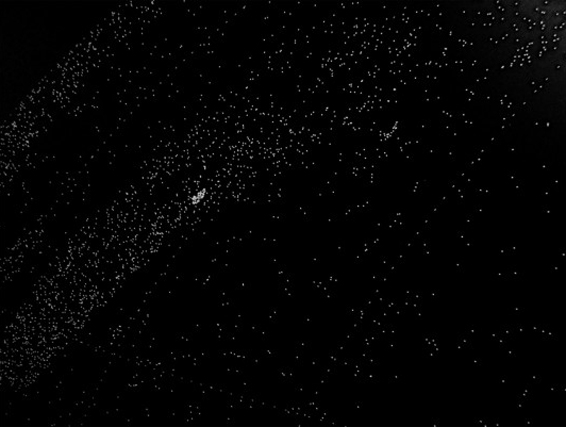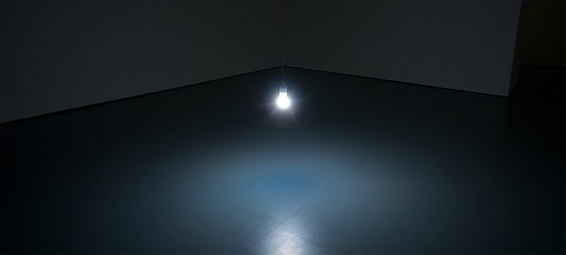Katie Paterson’s art addresses some of the biggest subjects around, both literally and figuratively—subjects about which we may be accustomed to thinking in terms of numbers or quantities, but which are difficult or impossible to subjectively feel or experience. For example, what is the age of a glacier or a galaxy? What is the distance from the earth to the moon? How big is the Milky Way? We can easily find numerical answers to such questions, but can we really know the answers concretely, the way we know measurements of human scale, such as an inch or an hour? Ever since the invention of the microscope and the telescope extended scientific observation beyond the reach of the naked eye, the gap between scientific and intuitive understandings of nature has been growing.

Paterson finds ways to approach such questions that engage both the mind and the eye. Her work often gives tactile, audible or visual form to some previously abstract concept or phenomenon. Her Focus exhibition at the Modern, curated by Andrea Karnes, brings three choice examples of work to Fort Worth. (The artist herself came to speak last month at the Tuesday evening lecture series organized by Terri Thornton.) It is among the most intellectually stimulating and challenging work that I’ve seen in North Texas for some time.

Langjökull, Snæfellsjökull, Sólheimajökull (2007) are three black-and-white digital films that follow three long-playing records cast from Icelandic glacial ice, dissolving as they play sounds recorded from the same glaciers. Light Bulb to Simulate Moonlight (2008) is an array of 289 light bulbs, custom designed to give off the light of the full moon and engineered to last the 66 years of an average human life span. All the Dead Stars (2009) is an etched chart of all known extinct stars in the universe.
The kind of experience Patersonis exploring is that of the sublime, which the philosopher Immanuel Kant presented as a contest between imagination and reason:
“The very inadequacy of our faculty for estimating the magnitude of the things in the sensible world [imagination] awakens the feeling of a supersensible faculty [reason] in us.”
But much thinking about the sublime is grounded in the kind of examples that an eighteenth-century philosopher (or painter, such as J. M. W. Turner or Caspar David Friedrich) could perceive with the naked eye: thunderstorms, mountains, oceans. Paterson turns our attention to the 21st-century sublime, in which science is done by global teams of experts working with powerful computers. It is mind-expanding work.
Image at top: Light Bulb to Simulate Moonlight (2008) (All images courtesy of the Modern Art Museum of Fort Worth)





